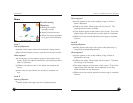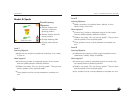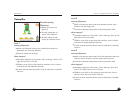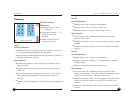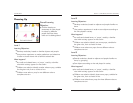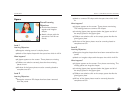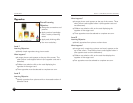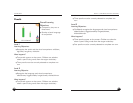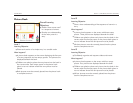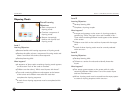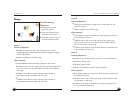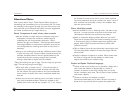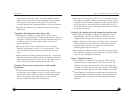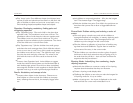
TIZZY’S TOYBOX SPECIAL EDITION
37
SHERSTON
36
given position around the bag. The other children need to
guess which positional word was whispered to the volunteer
by looking at the position of the spade. The child who
correctly guesses the whispered position is the next volunteer.
O
Outside, ask children to go under/over/next to etc the play
equipment.
Caterpillar: Matching and close observation
O
Challenge the children to ‘Dress (child’s name)’. Ask a
volunteer to model one item of clothing taken from a pair, eg
one glove and ask the others to find the matching item from
a dressing up box. The box could contain: socks, shoes,
gloves, earrings, etc.
O
Give each child an item and discuss one or more of its
features, for example ‘it’s red’ or ‘it’s red and stripy’. Then
ask the child to find other items that match the one they
have.
O
Hide some pairs of items (gloves and socks etc – similar and
different) around the setting and ask the children to find one
item each before returning to the group. They then need to
find the person with the matching pair to their item.
Counting: One-to-one correspondence and number
cardination
O
Create instruction labels for each area of the setting,
showing how many children can play in each area at a time.
Ensure that all the children are aware of what these labels
mean and regularly encourage them to check that the
correct number of children are indeed there!
O
Each day, lay out groups of 10, 9, 8, 7, 6 etc items around
the setting, eg pencils, rubbers, paintbrushes, shapes, pieces
of paper. Ask the children to keep their eyes open for groups
of (x) and tell you when they find one. Write each ‘find’ on
the board with the name of the child who found it and where
the group was found.
Dressing Up: Making sets and recognising familiar roles
O
Give a group of children a selection of magazines and a
target familiar role. Ask the children to find and cut out
images of the clothing worn and props used by that role.
O
Make a collection of hats worn by familiar roles – give each
child a different hat and ask them to show the rest of you
something that the focus role would do. Can the other
children guess what the mime is?
O
Encourage the children to draw a picture that shows people
they think are important, or who help them. Can they explain
why they have included each person?
Jigsaw: Spatial awareness
O
Invite children to create their own jigsaws. Firstly ask the
children to draw a simple picture on a piece of card. The
children could draw around shapes. Then with adult help,
ask them to cut out three or four of the shapes. The children
can then swap their jigsaws with other children in the class.
O
Provide plenty of opportunity to experiment with shape and
space: banging round pegs into holes, posting shapes into
matching spaces, dressing a doll with appropriately-sized
clothes.



